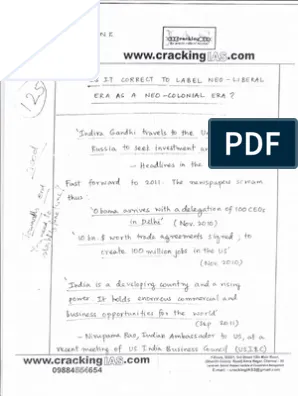- Home
- Prelims
- Mains
- Current Affairs
- Study Materials
- Test Series
The Peshwas
The Peshwas, meaning “Foremost Ministers,” played a crucial role in shaping the Maratha Empire’s power and influence from 1713 to 1818. With their strategic leadership and military prowess, they expanded Maratha territory and consolidated their rule across the Indian subcontinent.
Peshwas Rulers and Maratha Power and Influence
- Balaji Viswanath (1713–1720)
- He helped Maratha emperor Shahu stabilise the kingdom after the civil war; Convinced Kanhoji Angre to support Shahu against Europeans; Revived jagir grants and made Peshwa’s office hereditary.
- He was succeeded by his son, Baji Rao I.
- Baji Rao I (1720–1740)
- The Renowned Peshwa: He was the most famous of all nine Peshwas and also known as “Thorale”, meaning ‘Elder’ Baji Rao.
- He was the greatest exponent of guerrilla tactics after Shivaji.
- Administrative Capital Shift to Pune (1728 AD): He shifted the administrative capital from Satara to Pune in 1728 AD.
- Initiation of the Maratha Confederacy: He initiated the system of confederacy among the Maratha chiefs.
|
Confederacy: Under this system, each Maratha chief was assigned a territory that could be administered autonomously. |
|
|
Confederacy |
Area |
|
GAEKWADS |
Baroda |
|
BHONSLES |
Nagpur |
|
HOLKARS |
Indore |
|
SCINDIAS |
Gwalior |
|
PESHWAS |
Poona |
- Expeditions/Conquests:
- Expanded the Maratha rule from Cuttack (Krishna) to Attock.
- Popularised the idea of Hindu-padpadshahi (Hindu Empire) to secure the support of Hindu chiefs against the Mughals.
- Defeated Nizam of Hyderabad, the Rajput Governor of Malwa, and the Governor of Gujarat.
- In 1722 AD, he captured Salsette and Bassein from the Portuguese. He fostered friendly ties with the English to facilitate free trade in the Deccan.
- Balaji Baji Rao (1740–1761)
- Introduction: Succeeded his father, Baji Rao I as Peshwa. He was also known as Nana Sahib.
|
- Victory over Alivardi Khan of Bengal: He defeated the Nawab of Bengal, Alivardi Khan, and entered into an agreement with the Mughal Emperor in 1752 AD.
- Agreement with the Mughal Emperor: Assured the Mughal Emperor for protection from internal and external enemies in lieu of Chauth of the north-west provinces and the total revenue of Agra and Ajmer.
- Marathas’ Role in the Third Battle of Panipat: Honouring this agreement, Marathas fought the Third Battle of Panipat (1761 AD) when Ahmad Shah Abdali invaded India.
|
Battle of Udgir (1760)
|
- Third Battle Of Panipat (1761)
- Ahmad Shah Abdali consolidated his position through military expeditions against the Mughals, taking control of Multan, Punjab and Delhi by 1757.
- An expedition under Malhar Rao Holkar and Raghunatha Rao removed the agent of Abdali at Delhi and captured Sirhind and Lahore in 1758.
- Course of War: To counter the challenges, Abdali returned to India in October 1759 and recovered the Punjab.
- Loss of Dattaji and Madhav Rao: The Peshwa sent Dattaji Scindia to the Punjab but was defeated in the battle (1760). Malhar Rao Holkar was also defeated at Sikandara.
- Combined Army of Peshwa: Then the Peshwa recruited a vast army under the command of Sadasiva Rao. They were joined by the Holkar, Scindia and Gaikwar.
- Abdali responded by allying with Najib-ud-Daulah of Rohilkhand and Shuja-ud-Daulah of Oudh.
- No Allies to Marathas: The Marathas failed to find allies among the northern powers, as they had already alienated the Nawab of Oudh, the Sikh, Jat chiefs, and the Rajputs.
- Effects of the Battle of Panipat: Severe defeat of the Marathas, with casualties including Viswas Rao, Sadasiva Rao, and ultimately death of Peshwa in 1761.
- Post-battle, Holkar’s and Scindia’s contingents retreated.
- Despite initial setbacks, the Marathas regained northern power within a decade, supporting Mughal Emperor Shah Alam.
- Peshwa after Balaji Baji Rao(1761-1772)
- Rise of Madhav Rao: was successor and son of Balaji Baji Rao, under Raghunath Rao’s regency in 1761.
- He secured victories against the Nizam (1763) and Haider Ali (1765-1767 and 1772).
- He reinstated control in northern India, subduing various regional powers, like Rohillas (Pathans), Rajput states and Jat chiefs and repositioned Emperor Shah Alam II at Delhi from Allahabad (under British-protection) in 1771.
- Tragic Death: His unexpected demise in 1772 marked the end of his influential reign.
- Last Peshwa: Following several successions, Baji Rao II, the son of Raghunath Rao, became the last Peshwa after Madhav Rao II’s death.









 Latest News
Latest News
 General Studies
General Studies